


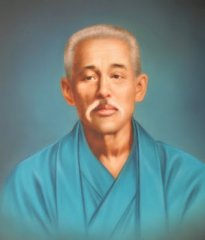
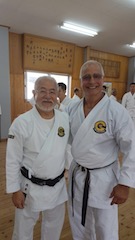
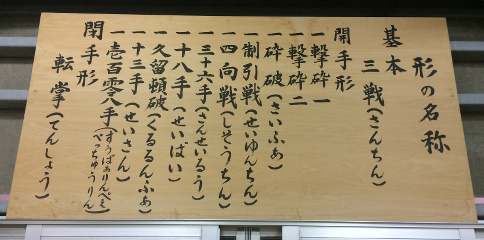
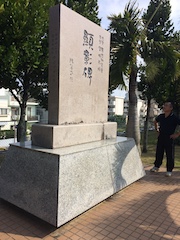

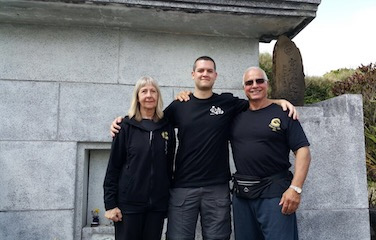
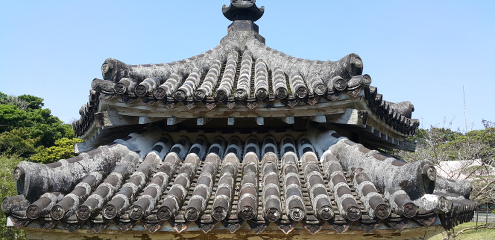
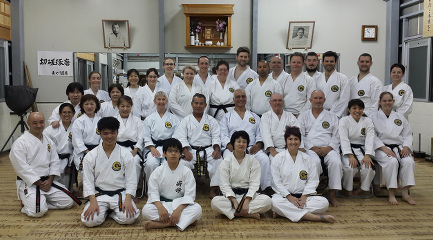

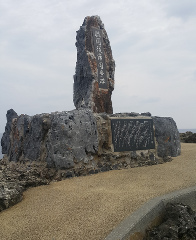
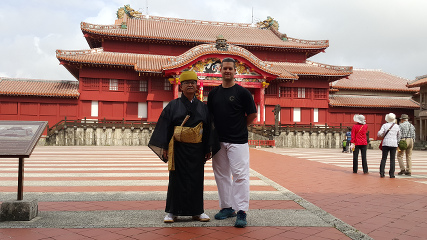

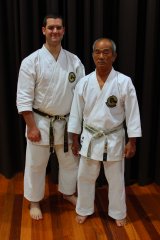

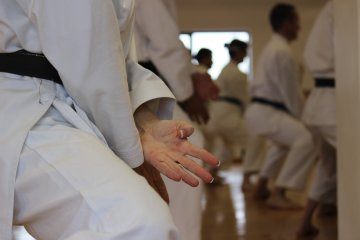




















You Are Here: About » KaratedoThe Art of Karate:Karate or Karatedo is a martial art of Okinawan origin. Research indicates that it developed from a synthesis of indigenous Ryukyuan fighting methods and southern Chinese martial arts. Karate is known primarily as a striking art, featuring punching, kicking, knee/elbow strikes and open handed techniques. However, grappling, joint manipulations, locks, restrains, throws and vital point striking are inherent to the art.
 In general, modern karate training is divided into three major areas: basics ("kihon" in Japanese), forms ("kata" in Japanese), and sparring ("kumite" in Japanese). Basic motion (Kihon) is the study of the fundamental techniques (punching mechanics, footwork, stances) of the art. This is the "public face" of the art that most people recognize, ie, the stepping and punching movements. Kata means "form" or "pattern"; however, they are not simply aerobic routines. They are patterns of movements and techniques that demonstrate physical combat principles. Kata may be thought of as fixed sequences of movements that address various types of attack and defense. It is important to remember that they were developed before literacy was commonplace in Okinawa or China, so physical routines were the logical method for preserving a body of this type of information. It is also important to remember that the moves themselves may have multiple interpretations as self-defense techniques- there is no "standard right or wrong" way to interpret them, but interpretations may have more or less utility for actual fighting. For example, the same passage of a kata may be interpreted as block/punch, or joint strike-lock/punch/throw. Sparring may be constrained by many rules or it may be free sparring, and in modernity is practiced both as sport and for self-defense training. 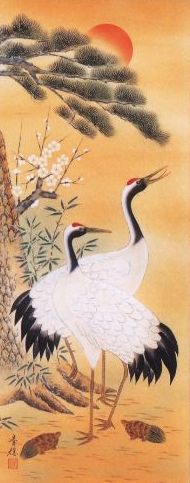 The word "karate" initially comes from the Okinawan pronunciation of the Chinese characters "kara", referring to China itself from the Chinese Tang dynasty, and "te", meaning hand. The term "empty hand" carries with it Japanese Zen connotations that go beyond the obvious inference that the practitioner carries no weapon. The Zen process of emptying the heart and mind of earthly desire and vanity for oneself through perfection of one's art. Some readings of this new ideogram refer to rendering oneself empty or egoless, leading to further development of spiritual insight. Funakoshi stated that the actual meaning of his writings are as follows: "As a mirror's polished surface reflects whatever stands before it and a quiet valley carries even small sounds, so must the student of Karatedo render of their mind empty of selfishness and wickedness in an effort to react appropriately toward anything they might encounter." Such philosophies have been inspirational to many generations of karate students; yet historically it's worth noting that in the climate of Japan in the 1930s, removing an explicit reference to China in the art's name may well have been a politically expedient move. The "do" suffix (in karatedo) is used for various martial arts that survived Japan's turbulent transition from feudal culture to "modernity", and implies that they are not just techniques for fighting, but have spiritual elements when pursued as disciplines. In this circumstance it is usually translated as "the way of" (eg. Aikido, Judo and Kendo). Thus, "karatedo" is "the way of the empty hand."
|